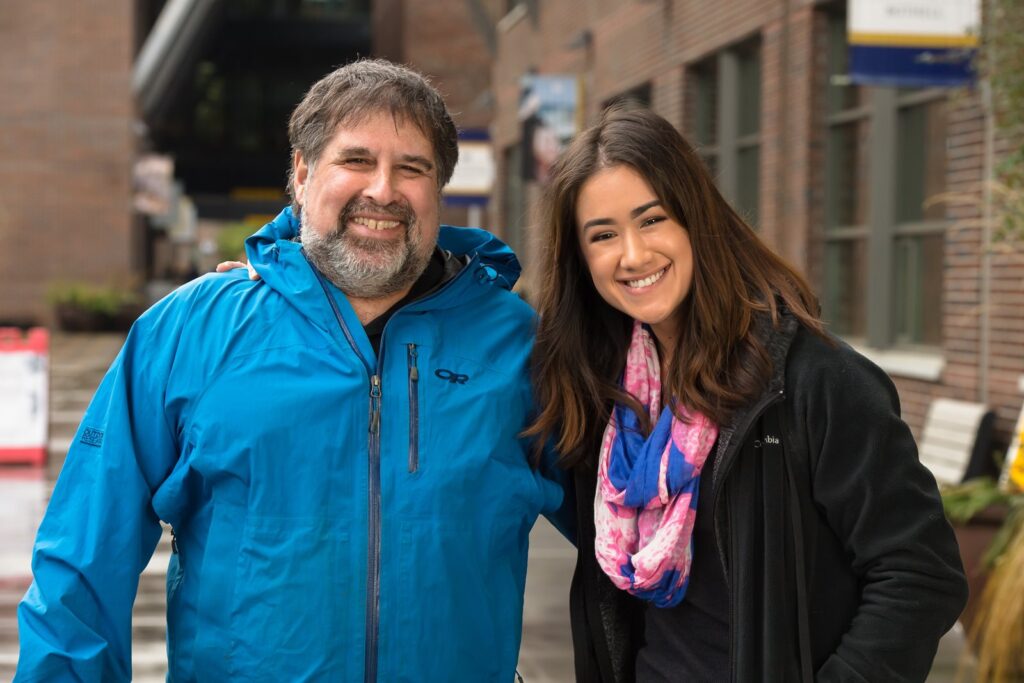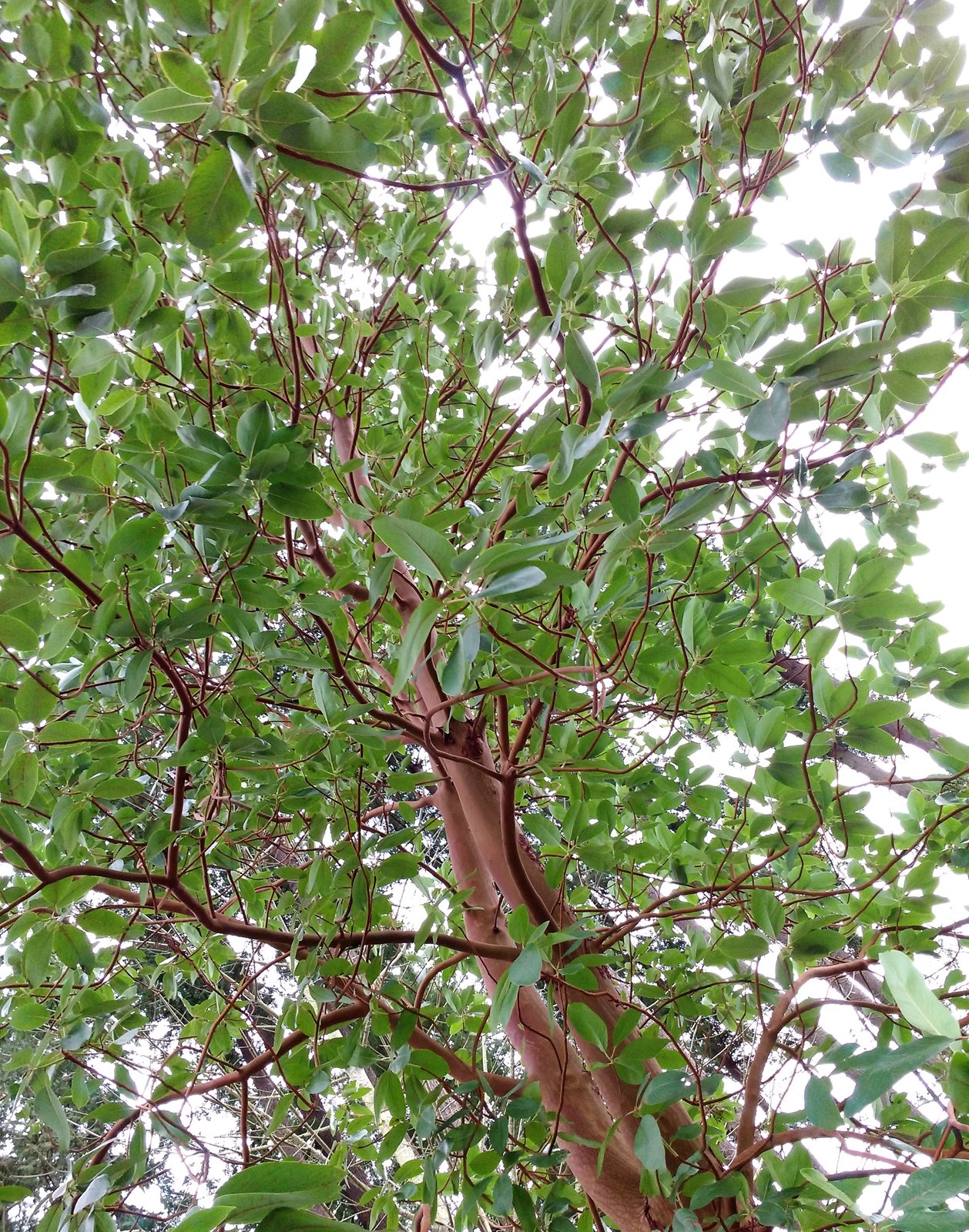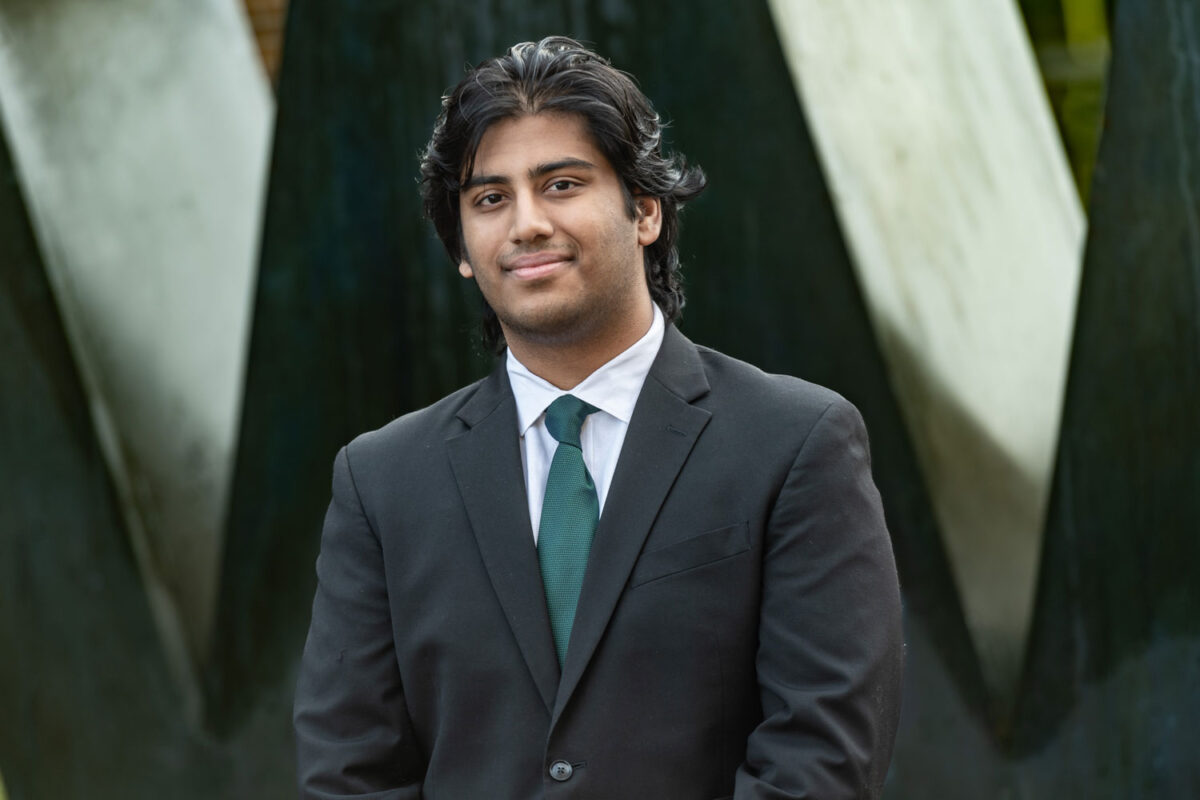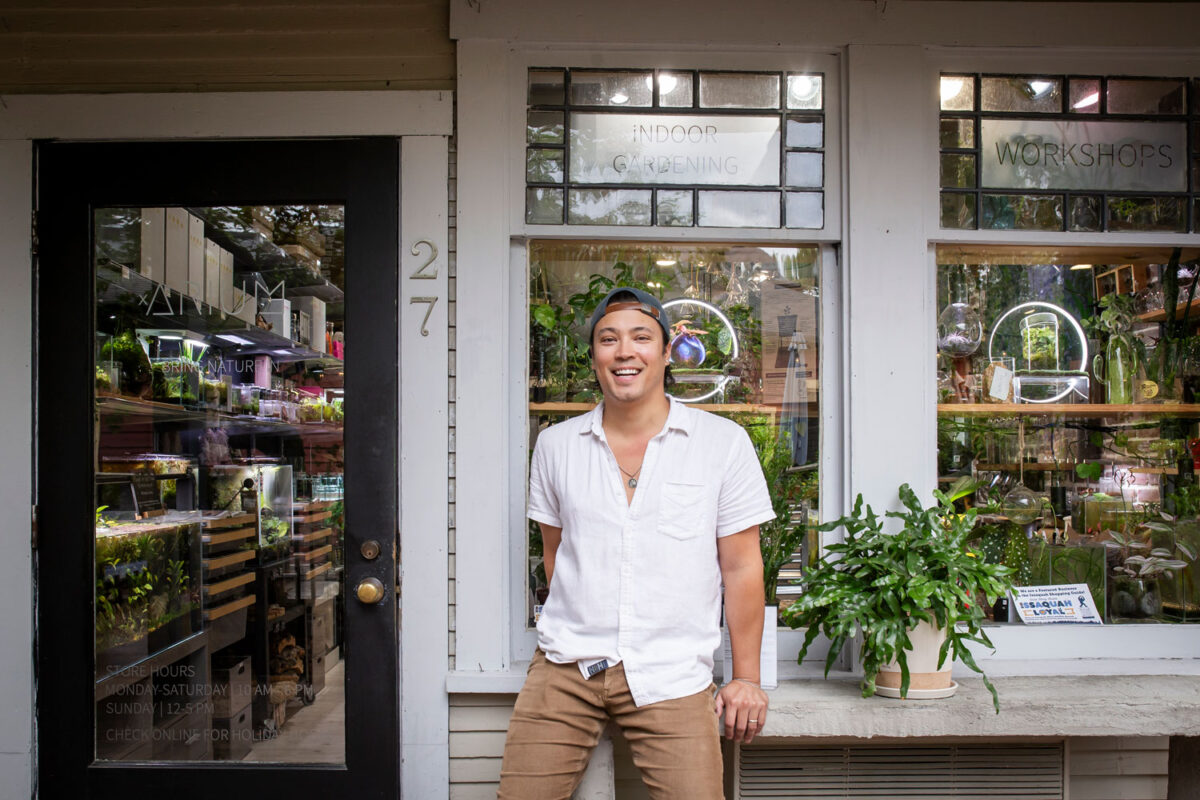
By Douglas Esser
Jessica Kunder’s favorite tree on the University of Washington Bothell / Cascadia College campus — and she’s examined every single one — is the Pacific madrone or madrona, an elegantly branching West Coast native with smooth peeling bark in shades of pink and orange.
There are three madronas bordering the west side of campus that Kunder encountered as she surveyed the more than 500 trees on the upper campus in a research project with Associate Professor Warren Gold, an environmental scientist in the School of Interdisciplinary Arts & Sciences. Kunder’s research has been recognized with a Mary Gates scholarship.
The work builds on an earlier survey to build a database of the size and location of every tree on campus more than six inches in diameter. With a computer model called i-Tree, users can quantify the value of each tree in terms of the carbon it holds, the oxygen it produces and the pollutants it filters out of runoff.
Methodically measuring each tree — sometimes in the rain and cold, sometimes in the sun with hummingbirds whirring around — gave Kunder a deeper appreciation for nature than she had in 2106 when she and her boyfriend moved from Florida to Washington. After transferring from the University of South Florida, one of her first classes at UW Bothell was Pacific Northwest Ecosystems with Gold.
“You look around at the species of plants that are growing under this tree canopy, and you understand they are under there because of the light conditions they need. Everything just makes sense where it is. It gave me an appreciation for nature,” said Kunder, who graduates in June with a degree in biology.
Kunder’s long-term career goals are in medicine, perhaps in epidemiology. But she doesn’t see her path through the campus trees as a diversion.
“I’m glad I chose something that’s not directly related to my goal of going into medicine because I never would have this valuable appreciation for nature and how important it is for mental health and sustaining this world around us,” Kunder said.
The experience also taught her “how capable I am.”
“You’re able to answer questions and explore and use tools you haven’t used before. And you’re able to take that information and connect with people in a way you never thought was possible,” Kunder said.

The Mary Gates scholarship made it possible for Kunder to refine the research, said Gold, who agrees the majestic madrona is one of the most beautiful trees on the planet.
Kunder thanks both Gold and Tyson Kemper, a grounds supervisor on campus, for their guidance. She also credits the Mary Gates scholarship for reducing her job stress.
“It’s helped me become more focused on my work,” Kunder said. “It’s also an incredible honor. I’m really grateful to the endowment and the state of Washington.”
The competitive Mary Gates Research Scholarships go to University of Washington undergraduates to enhance faculty-guided research. The $5,000 scholarship, which is disbursed in $2,500 installments over two quarters, enables students to focus more time and attention on their projects. Students present their work in the spring at the annual Undergraduate Research Symposium.
The scholarships were endowed by Bill and Melinda Gates in 1995 in memory of his mother, Mary Maxwell Gates, who served as a UW regent 1975-1993. The endowment takes applications twice a year, once in the fall and once in the winter, and announces recipients in winter and spring.



